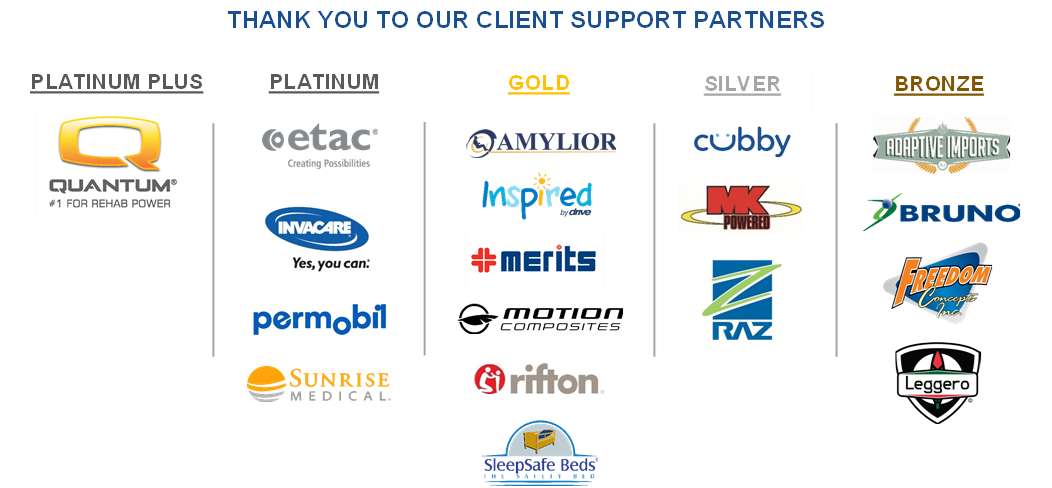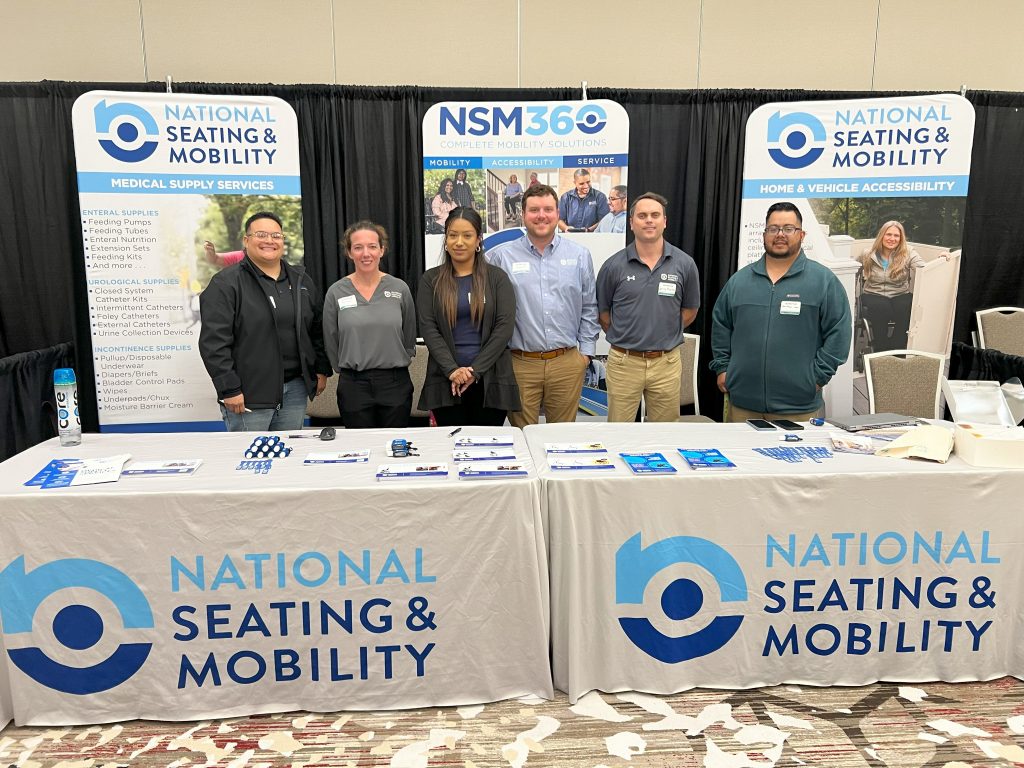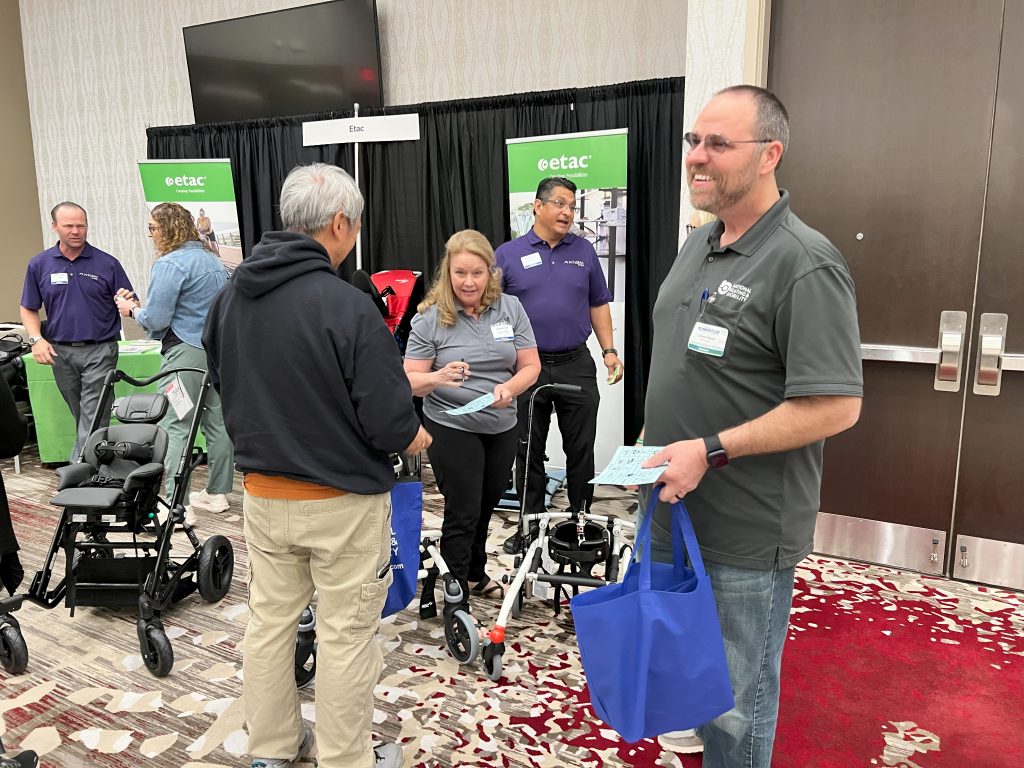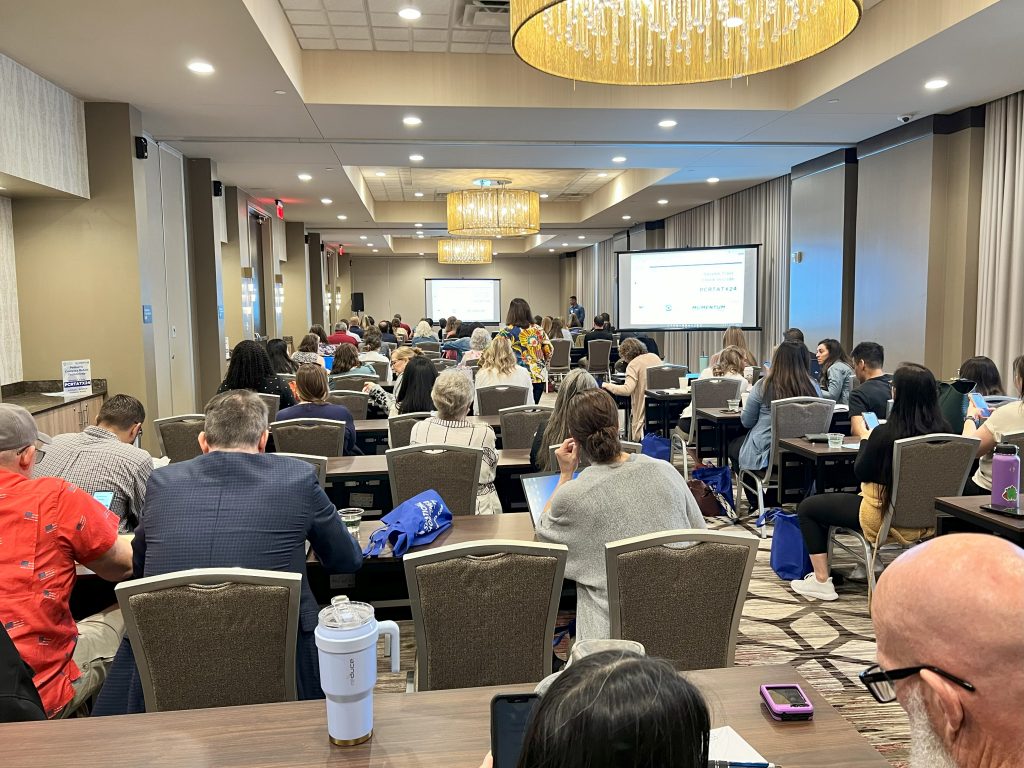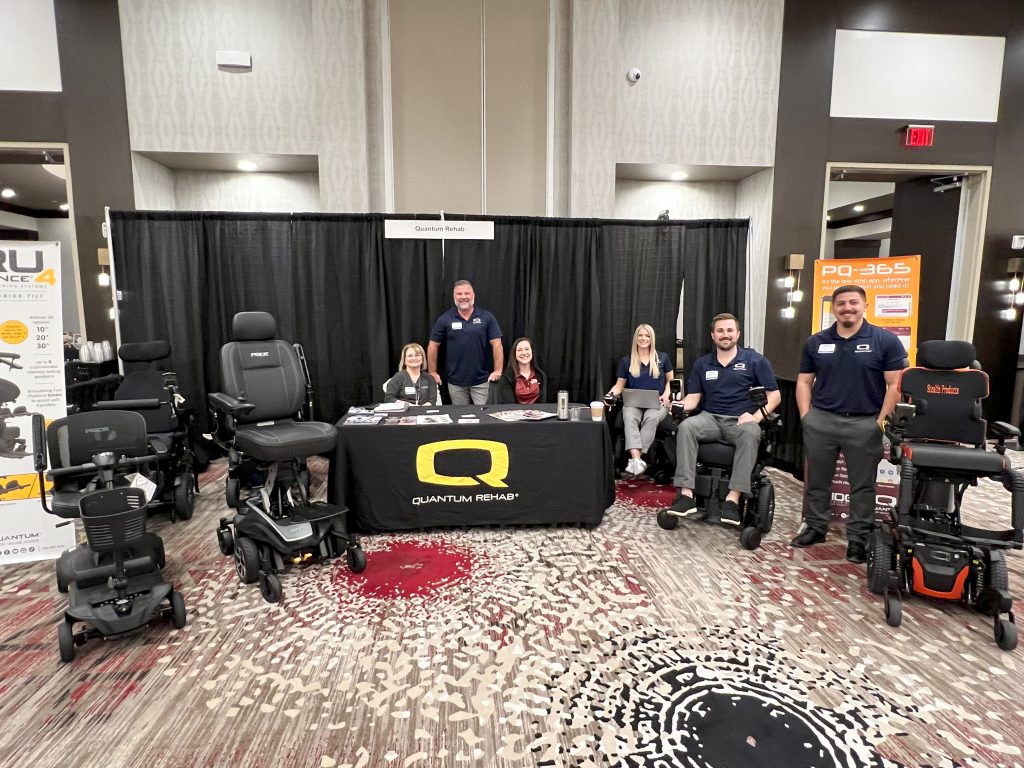AUSTIN MOMENTUM ACADEMY EDUCATION & TECHNOLOGY EXPO
Friday, April 25, 2025
Embassy Suites
Round Rock, TX
Event Highlights
- Earn up to 6 hours of continuing education (CE) credits for PT, PTA, OT, COTA, ATP
- CE Courses approved by TPTA & TOTA
- Network with industry professionals
- Exhibit hall with the latest assistive technology
- Breakfast and lunch provided
The rate is: $69 for up to 6 CE credits
SCHEDULE OF EVENTS
7:00am - 7:45am: Registration
7:45am - 8:00am: Kick-off
8:00am - 12:00pm: Education Courses
12:00pm - 1:00pm: Lunch
1:00pm - 5:00pm: Education Courses
The Supplier Exhibit Hall will be open throughout
the day with 2 hours of dedicated exhibit hall time.
Click here for full event schedule.
Continuing Education Courses
Seating Foundations Part 1: Linear Measurements for Mat Evaluation
0.1 CEU / TPTA & TOTA pending
Presented by: Alex Chesney, OTR, ATP/SMS
Quantum Rehab
This course will take time to explore the foundation of a mat evaluation looking into how measuring a client properly can translate into the appropriate equipment recommendations. Without an in-depth mat assessment to start the equipment recommendation process, you are leaving the outcome to chance. Every client is unique as are their seating and positioning needs. The key way to identify these unique needs comes in the form of the mat evaluation. This class provides an overview of what a mat evaluation should be comprised of, what positioning and orthopedic factors should be assessed, along with examples of proper linear measurement techniques and assessment. This course helps to bridge a gap that exists between ATPs and clinicians to bring the two together as a team who can better collaborate and come up with the optimal outcomes desired. We will follow a standardized wheelchair assessment form to complete anatomical linear measurements and apply these measurements to a seating set up.
Advancing Child Development: The Role of Gait Trainers in Mobility
0.1 CEU / TPTA & TOTA approved
Presented by: Karla Sonderland, MS, OTR/L
Sunrise Medical
This one-hour course will be a recap of the typical gait development and its critical role in a child's brain and musculoskeletal growth. This course will delve into the numerous benefits of promoting early active mobility in children with additional needs, focusing on hip joint and muscle development. Participants will explore the evidence on gait trainers, evaluate the pros and cons of various styles, and learn about the innovative features and accessories of gait trainers. These tools can significantly enhance child exploration, interaction, and participation. Real-world case studies will illustrate the practical application of clinical theories using gait trainers.
Seating Foundations Part 2: Angular Measurements for Mat Evaluation
0.1 CEU / TPTA & TOTA pending
Presented by: Alex Chesney, OTR, ATP/SMS
Quantum Rehab
Proximal stability is the key to control, safety and function. The seated position is not a position of stability for the human body, so when an individual must utilize a wheelchair for their primary means of mobility, it can be a challenge to successfully obtain/maintain proximal stability. Even postural asymmetries that appear to involve distal segments of the body, often can be attributed to instability or poor positioning of the pelvis. It is crucial to be able to assess the flexibility of these asymmetries and be able to properly recommended equipment that can aid in the correction or prevention of further mal alignment. This course will guide clinicians and ATP suppliers through the mat assessment process and provide intervention strategies to promote optimal pelvic and lower extremity positioning, thus improving safety and function for the end-user.
Thinking Critically About Mobility Base Selection and the Impact of Function
0.1 CEU / TPTA & TOTA pending
Presented by: Karla Sonderland, MS, OTR/L
Sunrise Medical
This course will provide information pertaining to mobility base selection and the impact on function. Dependent, manual, and power mobility bases will be reviewed. As part of this course, we will discuss the application of mobility equipment to support the needs of the client regarding posture, functional independence, and participation in iADLS/mRADLs. Additionally, the course will review specific challenges related to the assessment and prescription of mobility bases, current evidence, and client-specific factors to consider in the decision-making process.
Getting Connected
0.1 CEU / TPTA & TOTA pending
Presented by: Lisa Rotelli
Invacare/ASL
Individuals with mobility challenges can also struggle with access to mobility and to everyday technology. When someone also needs to augment communication those challenges compound. We will discuss strategies and view case studies for building access for persons with the most complex needs and to integrating their access systems to promote more independence.
Pediatric Adaptive Standing: Five Considerations for Optimizing the Outcomes
0.1 CEU / TPTA & TOTA pending
Presented by: Phil Blough, DPT
Rifton
This 60-minute presentation will address five novel and up-to-date considerations for pediatric adaptive standing. Specifically: standing as physical activity, positioning for postural control, hip abduction positioning and contracture management, active participation in the sit-to-stand transfer, and creating opportunities for social engagement and participation in standing. Current evidence supporting these interventions will be presented along with case examples to illustrate applications of these concepts. A segment for Q&A will conclude the session.
Center of Gravity: Understanding the Functional Impact
0.1 CEU / TPTA & TOTA pending
Presented by: Petra Conaway, PT, DPT, ATP
Motion Composites
Define and examine center of gravity as it relates to manual wheelchair configuration. Review evidence related to configuration and optimal manual wheelchair performance.
Explore the impact of vertical and horizontal axle position changes on end user function, safety, and upper extremity health.
The Drive for Function and Development: Alternative Drive Control Considerations for Early Power Mobility
0.1 CEU / TPTA & TOTA pending
Presented by: Alex Chesney, OTR, ATP/SMS
Quantum Rehab
Assessing an end user for power mobility can be an intimidating task. Decisions that are made will have an impact on the individual’s quality life, functional mobility, physical well-being, and social interactions. This task can seem even more daunting when it comes to the pediatric end user. Children have the natural desire to move, explore, and learn. Research has shown that there is a strong correlation between self-initiated mobility and the development of visual, cognitive, social, language, and perceptual skills. This course will discuss the characteristics and decision-making process for alternative drive control devices, as well as the special considerations on early power mobility intervention. Potential assessment and training tools for pediatric power mobility will also be explored.
Increased Confidence: Building Success with Power Standing Mobility
0.1 CEU / TPTA & TOTA pending
Presented by: Thomas Halka, MOT, OTR, ATP
Permobil
Providing standing power wheelchairs does not need to be a complicated or overwhelming experience. The weight of ensuring that your clients get the best outcomes and do not lose confidence in the device can keep even the best clinicians and ATPs from going down the path of standing. What does successful standing look like? In this course we will review what makes successful standing, how dosages and expectations can make it easier for the client to achieve their goals, as well utilizing programming for standing success.
Custom-Configured Seating - Designing Seating & Mobility for Growing Bodies
0.1 CEU / TPTA & TOTA pending
Presented by: Curt Prewitt, MS. PT, ATP
Etac/Ki Mobility
Custom-configured seating may be perceived by some as a challenging puzzle. With all the possible configurations and myriad shapes, components, and materials to select from or define, how does one determine what to do? Understanding the clinical decision-making as well as the purposes and capabilities of this seating technology can profoundly influence successful outcomes. It can be a challenge to get it right, but it is called complex rehab, after all.
In this presentation, we will briefly review the relevant components of a postural assessment. We will then discuss how to translate the findings from that assessment to specify and design the custom-configured seating system and accurately work our way through and complete the order form. Considerations will include providing an understanding of the variety of custom modifications, planning for growth or other changes, and ensuring an appropriate integration with a mobility base.
Tailored Seating Solutions for High-Risk Clients
0.1 CEU / TPTA & TOTA approved
Presented by: Thomas Halka, MOT, OTR, ATP
Permobil
In the wheelchair seating arena, providing a seating system for the clients at high risk for pressure injury can be both intimidating and overwhelming. This 1-hr course provides an in-depth understanding of how to incorporate evaluation findings, seating characteristics, and client goals when formulating equipment recommendations for high-risk clients. Participants will learn to identify clinical indicators of pressure injury risk, apply ISO wheelchair cushion performance standards, and recognize key material traits in seating products. A complex case example will be discussed to illustrate the process of integrating evidence and client goals to enhance functional independence.
By the end of this course, participants will be equipped with the knowledge to make informed, evidence-based, and client-centered seating recommendations, ultimately improving the quality of life for wheelchair users.
Pediatric Wheelchair Cushions and Backs - Matching Technology and Needs
0.1 CEU / TPTA & TOTA pending
Presented by: Curt Prewitt, MS, PT, ATP
Etac/Ki Mobility
For many years, there were only a couple basic choices of primary supports for pediatric wheelchair users: custom configured or custom molded. The available options for primary supports, backrests and cushions, for the pediatric client have expanded considerably over the years, and today there are a number of off-the-shelf, out-of-the-package products available. This greater range of available products requires professionals to be more discerning regarding the variety of choices before them, and recognize which product accomplishes the objective in a clinically appropriate way. We know that children are not just a smaller version of the adult client and that their needs can be different. What does the research say about what is important for the pediatric client regarding providing postural support, addressing postural asymmetries, maintaining tissue integrity, facilitating function, etc. This presentation will explore the types of primary supports on the market, and seek to inform clinical practice by discussing considerations and applications of the various types of technology for primary supports for the pediatric wheelchair user.
Explore the course offerings. You can pick & choose the classes you'd like to attend during registration.
